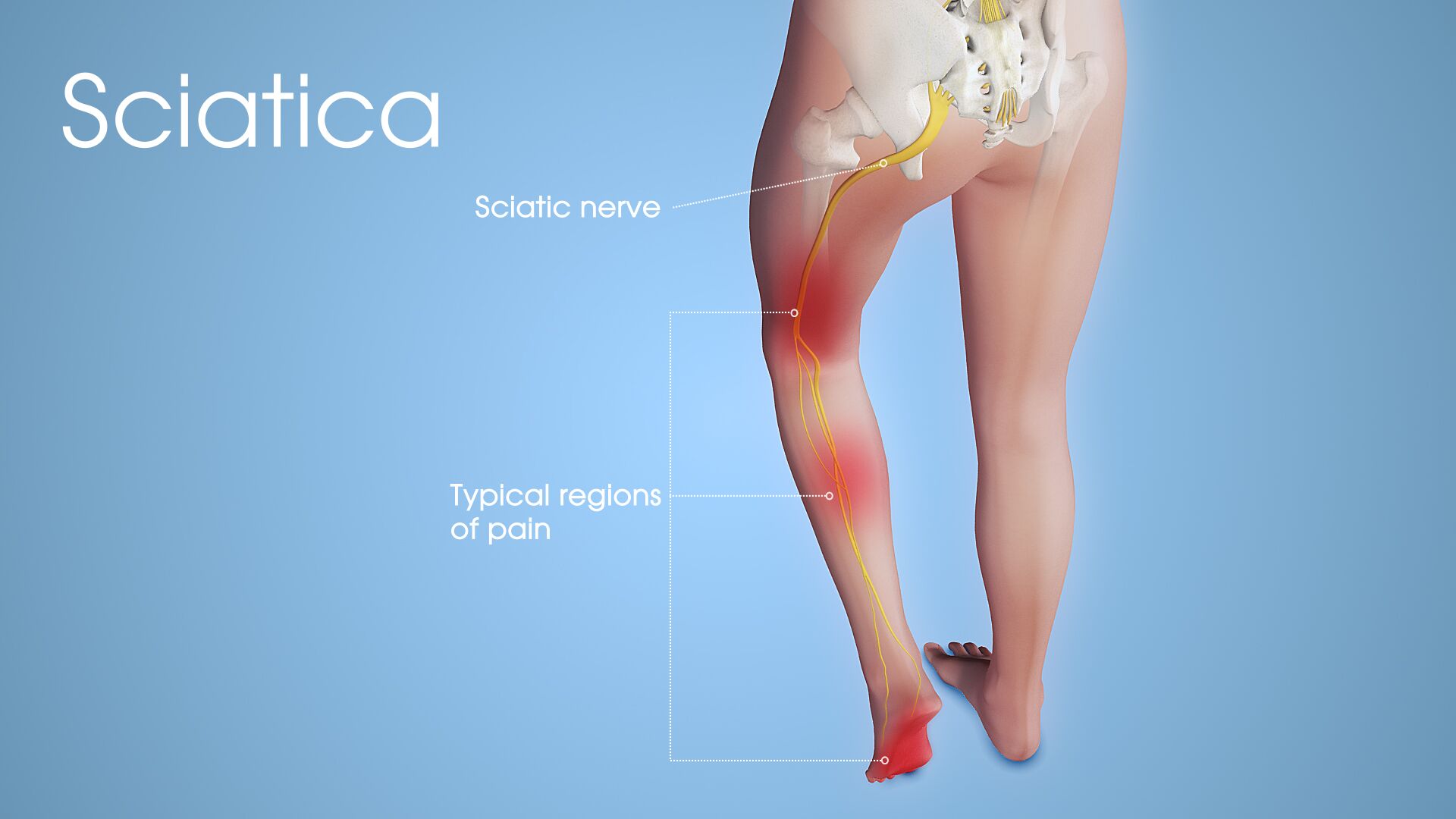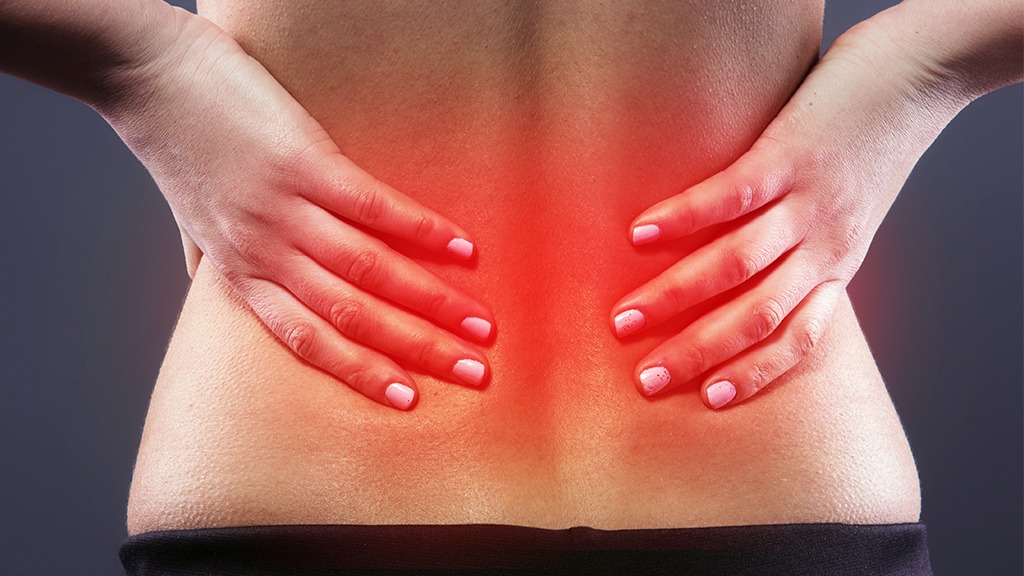Lumbago With Sciatica: Treating The Pain – Sciatica is often caused by a problem with the lumbar discs. However, it can also occur for other reasons, such as muscle strains and injuries. Lumbago is a pain in the lower back due to inflammation and disc problems.
Common signs of sciatica include muscle pain in the back of your thigh, hip, or buttocks, which can radiate down the leg; numbness and tingling in the leg; pain on walking; and pain during bowel movements. Pain in the lower back is a sign of lumbago. It radiates down the spine, which may cause back pain. You may feel pain while sitting down. You may also feel pain in your hips or buttocks.
When treating sciatica, you should reduce the pressure on the nerve root causing the problem. This can be done by reducing stress and keeping the spine mobile. You may need professional help from a physical therapist if you’re dealing with chronic pain or severe injury.
Sciatica is a pain in the butt. You get hurt when the sciatic nerve is pinched between the spine and a bone or other body part.
Back pain is one of the most common reasons for seeking medical attention. It’s also one of the most frustrating because there are so many different types of low back pain.
So, how do you know which type of treatment is right for you?
Back pain and sciatica pain are two common conditions that can be treated naturally. If you suffer from either of these symptoms, you’re not alone. According to the National Center for Complementary and Integrative Health, back pain and sciatica affect tens of millions of Americans each year.
In this article, we’ll go over what sciatica is and how to treat it. We’ll also show you how to avoid getting it in the first place so you can have less pain and a faster recovery.
Sciatica causes and symptoms.
Sciatica is a condition that affects the nerves that run down the spine and legs. You may experience pain in your lower back, buttock, or leg if you suffer from sciatica. This pain can cause you to limp; in some cases, it may be so severe that you cannot walk.
This condition can often be caused by repetitive tasks, such as sitting at a computer, lifting something heavy, or driving for long periods.
I’m sorry you’re going through this. Many things can cause sciatica. You might try using an exercise ball or a foam roller to loosen up your back and shoulders.
Sciatica is excruciating and debilitating, so you should see a doctor right away if you suspect that you have it. However, if you want to treat it yourself, you can find natural remedies to help.
You can use essential oils, cold therapy, and specific exercises. Also, you can get a physical therapist to do some activities for you.
It would help if you started a healthy lifestyle to get rid of sciatica permanently. This includes eating a protein-rich diet, drinking plenty of water, and exercising regularly.
Exercise for sciatica
I’ve been working with sciatica for years and have written some articles about the topic. My goal is to help you understand sciatica and how to treat it so you can live a pain-free life.
The pain in your back, hips, and legs is a warning sign that something is wrong. Your body is sending a signal to tell you something is wrong.
Sciatica can occur when the sciatic nerve gets pinched. When the nerve is pinched, it causes pain, numbness, and weakness in the leg, buttocks, and sometimes the foot.
The causes of sciatica are numerous and complex. The primary reason is a bulging disc, but many other factors contribute to its development. One of the most critical factors is nerve compression.
Nerve compression is when the nerves and blood vessels are pinched between vertebrae. A herniated or ruptured disc usually causes it, but spurs can also cause it on the spine or bone.
There are several types of sciatica: lumbar, cervical, and radicular. They all result from compression of the sciatic nerve, which runs from your lower back to your foot. The symptoms of each type vary.
Massage therapy for sciatica
Sciatica is a painful condition that affects the sciatic nerve. It occurs when a nerve is pinched or irritated by a protruding bone, a herniated disc, or a tumor. Sciatica causes many causes, including muscle strain, pinched nerves, and arthritis. Sciatica is often associated with lower back pain but can occur anywhere along the sciatic nerve pathway.
Fortunately, sciatica treatment options are available. These include physical therapy, massage therapy, chiropractic care, and acupuncture.
Physical therapy is a useful option for sciatica treatment. Physical therapists can teach you exercises that can reduce pain. The goal is to strengthen the muscles to avoid future injury.
The exercises can be done at home. They may include stretching exercises, core strengthening, and postural correction.
Sciatica pain has become one of the most common conditions that people suffer from. If you’ve ever suffered from sciatica, you know how debilitating it can be. It feels like a shooting pain that travels along the spine.
The pain can radiate to the buttocks and down the legs. When the pain becomes severe, it can prevent you from getting a good night’s sleep. Many people don’t realize how painful the condition can be until it’s too late.
Treatment of lumbago
Lumbago is a condition where the pain from your lower back spreads into your legs. The cause of the pain varies, but it’s generally thought that your back, pelvis, and spine muscles are weakened. This weakness causes the muscles to spasm and contract, spreading the pain into your legs.
There are two main treatments for lumbago: heat treatment and muscle relaxants. Heat treatment involves applying hot packs to your lower back. The collections are made of cotton and contain a fluid with antibacterial properties. They are usually wrapped in plastic or rubber and can be bought in large bags from pharmacies.
You can buy a pack from a pharmacy, but making your own is cheaper. Just fill a bowl with water, add a few drops of lavender essential oil, and wrap it in a clean towel.
If you can’t afford to buy packs, heat a water bottle in a microwave oven. Alternatively, you can put a few drops of lavender essential oil into a cup of boiling water and leave it for a few minutes until the water has cooled. You can buy a unique thermos flask for this purpose.
The other option for heat treatment is massage. A professional masseuse can apply gentle pressure to your lower back with a particular ball pump device. Or you can buy a small hand-held electric massager, which is easier to use than a professional massage.
You can try muscle relaxants if you don’t like heat or massage. There are many kinds of muscle relaxants, but the ones effective in treating lumbago are non-steroidal anti-inflammatory drugs (NSAIDs), such as ibuprofen, naproxen, and ketoprofen.
They’re commonly found in combination pills, but you can buy them individually. The dosage should be two or three times daily and can be taken with food.
For muscle relaxants to work, you need to keep your body warm. So if you live in a cold climate, you might want to use a heating pad at night. The heating pads sold in pharmacies are fine, but you can make your own using a microwave.
/GettyImages-906005204-5bc158a246e0fb0026277d6d.jpg)
Frequently Asked Questions (FAQs)
Q: Is there a cure for Lumbago and Sciatica?
A: There are various ways to treat this problem. One of the most common treatments is taking an anti-inflammatory medication such as ibuprofen or naproxen. In addition, physical therapy is also very effective.
Q: How can someone discover if they suffer from Lumbago and Sciatica?
A: Most cases of sciatica start with a sharp pain in the lower back that can radiate down the leg. There are also usually tenderness and muscle spasms in the lower back. When the problem occurs on both sides, it is known as sciatica. Lumbago is a generic term for lower back pain not caused by injury. An injury may cause it, but not all injuries cause lumbago. Some people develop chronic lumbago without an injury causing the pain.
Q: How does a person know when to go to the doctor?
A: If you notice low back pain lower back pain radiating, idea to visit your doctor.
Q: What visiting your doctor is a good idea for Lumbago and Sciatica?
A: A chiropractor can be beneficial for treating Lumbago and Sciatica. They can perform exercises to strengthen the muscles in the lower back and the leg that support the spine. An exercise program also will help to prevent the recurrence of these problems.
Q: How can a person know if a chiropractor is qualified?
A: Chiropractors are trained to make certain adjustments to the body. They must be appropriately licensed. Chiropractic schools provide students with adequate training to qualify for licensure.
Myths About Lumbago And Sciatica
- Lumbago and sciatica are two different things.
- However, they both affect the same body area and can cause pain and discomfort.
- This is especially true if your symptoms are worse after sitting down.
- There are many different ways to treat lumbago and sciatica.
- However, it is essential to know that most of these options will only help relieve your symptoms temporarily.
- You can expect to need some form of treatment in the long term.
- Lumbago and sciatica are painful conditions.
- Most people who suffer from lumbago and sciatica find relief by visiting a doctor and getting prescription pain medications.
- There are also some over-the-counter pain relievers.
- The main problem with both approaches is that they often take several weeks or months to start working.
Conclusion
Regarding lumbago, you should rest, exercise, take an over-the-counter medication such as ibuprofen, and drink plenty of water. You can also try taking a few weeks off work to relax the muscles in your back. The truth is, I’m not entirely sure. But I can tell you that I have a friend who was diagnosed with both lumbago and sciatica. He went to the doctor, was given painkillers, and didn’t feel better. He said his symptoms got worse. He finally decided to research and found that most doctors agree that these two conditions are sporadic. So I don’t think they’re real.
You never know.
